Dental Bridges vs. Implants: A Comprehensive Guide
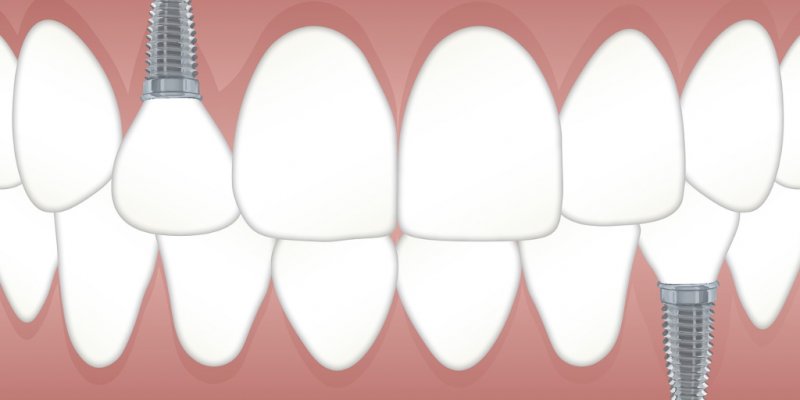
Tooth loss can significantly impact an individual's aesthetic appeal and functionality, often leading to a dent in self-confidence. There are several solutions available to mitigate these issues, with dental bridges and dental implants being the most commonly employed. Though they address the same fundamental challenges, these methods present distinct options at a technical level.
In this comprehensive guide, we will delve into the nuances of both dental bridges and implants, offering insights into their pros and cons, cost implications, and what each procedure entails, to help you make an informed decision.
Understanding Dental Implants
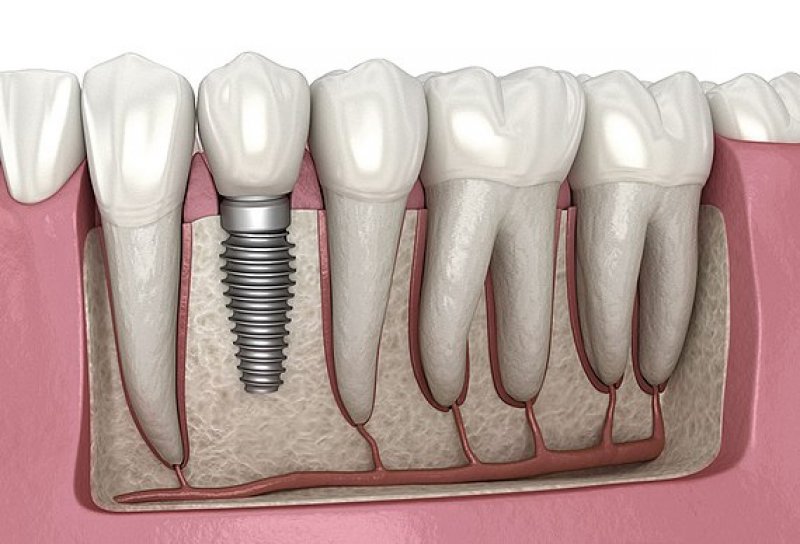
A tooth's underlying structure, which includes bone, ligaments, and nerves, is more complex than most people realize. When this structure is removed, the neighboring area gradually starts to deteriorate.
A dental implant substitutes this structure with a metal post, typically made of titanium. Over a span of a few months, new bone should grow around the implanted metal. Once the new structure is deemed secure enough by your dentist, a crown will be screwed onto the implant and sealed into place.
Pros and Cons of Dental Implants
Advantages of Dental Implants
Promotes Bone Health and Reduces Long-Term Risks
Dental implants pose less of a burden on the surrounding teeth and promote healing of bone structures and gums under the teeth. This is because the implant replaces the root of the missing tooth, stimulating the bone and preventing its deterioration, a common issue with other tooth replacement options. They are also known to reduce long-term risks associated with the jaw, such as misalignment of remaining teeth and changes in facial structure.
Durability and Longevity
One of the most significant advantages of dental implants is their durability. A high-quality dental implant is generally expected to last a lifetime, making it a long-term solution for tooth loss. This longevity can make dental implants a cost-effective solution over time, despite the higher initial cost.
Disadvantages of Dental Implants
High Initial Costs
While dental implants offer many benefits, they can be a costly treatment, especially in cases where numerous individual teeth need replacement. A single tooth replacement can cost several thousand dollars. This high initial cost can be a barrier for many patients, making other options like dental bridges or dentures more appealing.
Time-Consuming Procedure
The implant procedure also tends to be time-consuming and requires multiple procedures to complete. The process involves several stages, including initial consultation, implant placement, healing time, and placement of the crown. Oral surgery is often required for the implant placement, and your mouth may take months to heal following the initial implant procedure. This is significantly longer than other tooth replacement options, such as bridge work, which typically takes no more than a few weeks.
Need for Sufficient Bone Structure
For successful implant placement, a sufficient amount of healthy bone is required. If a patient has been living with tooth loss for a long time, they may have experienced bone loss, which can complicate the implant procedure. In such cases, additional procedures like bone grafting may be required, further increasing the cost and duration of the treatment.
Understanding Dental Bridges
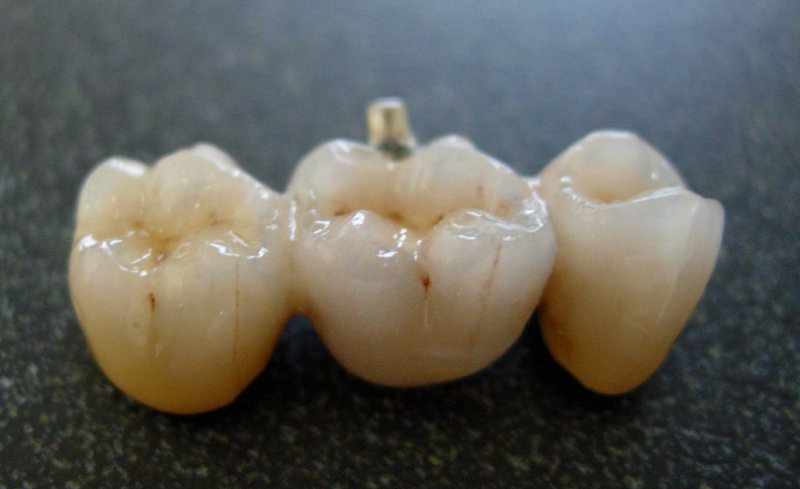
A dental bridge connects to the remaining healthy teeth surrounding a gap to form a bridge across the area in the recipient's smile. In traditional versions of the procedure, the two teeth on opposite sides of a gap are shaved down to accommodate a bridge.
A cap is then placed over each tooth and is accompanied by the bridge, replacing the missing teeth. In areas of the mouth that can handle less force or where only one tooth is missing, dentists now often use a winged, or Maryland bridge that's embedded into the neighboring teeth, rather than one that fully caps them.
In instances where there may not be teeth on both sides of a gap, a cantilevered bridge may be installed. This type of bridge is attached to a single tooth on one side, with the bridge structure hanging over the gap.
Pros and Cons of Dental Bridges
Advantages of Dental Bridges
Cost-Effective Solution
Dental bridges are often considered one of the most cost-effective methods for replacing missing teeth. Compared to dental implants, the initial cost of dental bridges is significantly lower, making them a more accessible option for many patients.
No Need for Bone Grafting
Unlike dental implants, dental bridges do not require bone grafting. This is particularly beneficial for patients who have experienced bone loss in the jaw, as they can still be suitable candidates for dental bridges. This also simplifies the procedure and reduces the overall treatment time.
Quick Treatment Process
The process of getting a dental bridge is typically quicker than getting a dental implant. The procedure usually involves preparing the adjacent teeth, taking an impression for the fabrication of the bridge, and finally, cementing the bridge in place. This can often be completed in a few weeks, making it a faster solution for replacing missing teeth.
Disadvantages of Dental Bridges
Strain on Adjacent Teeth
One of the main disadvantages of dental bridges is that they place greater strain on the surrounding structures, especially the two teeth that are attached to the device. These teeth need to be prepared, often involving removal of significant tooth structure, which can make them more susceptible to decay and gum disease.
Limited Lifespan
While dental bridges are a durable solution, they are not expected to last a lifetime. The average lifespan of a dental bridge is around 10 to 15 years with proper care. Over time, the bridge may need to be repaired or replaced, which can increase the long-term cost.
Does Not Address Bone Loss
Dental bridges replace the visible part of the tooth but do not replace the tooth root. This means that they do not prevent bone loss in the jaw, a common issue following tooth loss. Over time, this bone loss can lead to changes in facial structure and may require additional dental treatment.
Issues with Specific Types of Bridges
Certain types of bridges, such as cantilevered and Maryland bridges, can present additional problems. Cantilevered bridges, which are attached to a single tooth, place significant stress on that tooth, potentially leading to complications such as fractures or loosening. Maryland bridges, which have a minimal amount of attachment and a limited capacity to absorb force, may not be as stable or durable as traditional bridges.
Making the Right Choice: Dental Bridges vs. Implants
Choosing between dental bridges and implants is a significant decision that can impact your oral health, appearance, and quality of life. The most crucial step in finding the right treatment for your missing tooth is to have a comprehensive discussion with your dentist about your options.
Personalized Assessment and Consultation
Your dentist will conduct a thorough examination and consider all the specific factors of your situation. This includes your oral health, the condition and location of the missing tooth, the health of the surrounding teeth, and the density of your jawbone. They will also take into account your lifestyle, personal preferences, and budget.
Understanding the Options
Dental bridges and implants are two popular options for replacing a missing tooth, each with its own set of advantages and disadvantages.
Dental bridges are usually less expensive upfront and more likely to be covered by insurance. They also offer a quicker solution for tooth replacement and do not require surgery or bone grafting. However, they may need to be replaced after a decade or so, and they require the alteration of adjacent healthy teeth.
On the other hand, dental implants, while more expensive initially, can be a more cost-effective solution in the long run due to their durability. They are designed to last a lifetime, do not require alteration of surrounding teeth, and help maintain jawbone health. However, they require a surgical procedure and a longer healing period, and may not be suitable for patients with insufficient bone density or certain health conditions.
Making an Informed Decision
Your dentist will provide you with detailed information about both options, helping you understand the procedures, costs, benefits, and potential drawbacks. They will answer any questions you have and address your concerns.
If cost is not a primary concern and you're in good overall health with sufficient bone density, dental implants may be the better option as they offer a more permanent solution and don't damage surrounding teeth. However, if you prefer a less invasive procedure, a quicker solution, or have budget constraints, a dental bridge may be more suitable.
Ultimately, the decision between a dental bridge and an implant should be made in consultation with your dentist, taking into account your specific needs and circumstances. The goal is to choose the option that will provide the best long-term results for your oral health and overall well-being.
Exploring Mixed Solutions: Combining Dental Bridges and Implants
In some situations, a single tooth replacement method may not be sufficient, especially when a significant number of teeth have been lost consecutively. In such cases, dentists often recommend a mixed approach, combining the strengths of both dental bridges and implants to provide a comprehensive solution.
Implant-Supported Bridges
One common mixed solution is an implant-supported bridge. This could involve placing a dental implant at one end of the gap where a tooth, such as a molar, is missing. Once the implant has healed and integrated with the jawbone, a dental crown or cap is attached at the other end of the gap, to a healthy tooth. This creates a bridge from the implant post to the healthy tooth, effectively filling the gap with a sturdy and natural-looking replacement.
This solution combines the stability and bone health benefits of an implant with the cost-effectiveness and simplicity of a bridge. It's particularly useful when the teeth at either end of the gap are not strong enough to support a traditional bridge, or when multiple teeth are missing in a row.
Bridge-Like Structures Straddling Implant Posts
Another mixed solution is particularly beneficial for those who have lost most or all of their teeth in a specific section of their mouths. In this case, two dental implants can be placed at either end of the gap. Once these implants have healed, a custom-made bridge-like structure is created that straddles the two implant posts.
This solution, often referred to as an implant-supported denture or an implant bridge, provides the stability and bone health benefits of implants, while also allowing for the replacement of multiple teeth at once. It's a more cost-effective and less invasive alternative to replacing each missing tooth with an individual implant.
In conclusion, mixed solutions offer a versatile and effective approach to tooth replacement, combining the benefits of both dental bridges and implants. They allow for personalized treatment plans that can address a wide range of dental needs and circumstances. As always, the best solution will depend on your individual oral health situation, and should be discussed in detail with your dentist.
Exploring Other Options: Partial Dentures and Space Maintainers
While dental bridges and implants are common solutions for tooth replacement, they are not the only options available. Depending on your specific needs, oral health, and budget, alternatives like partial dentures and space maintainers may also be considered.
Partial Dentures
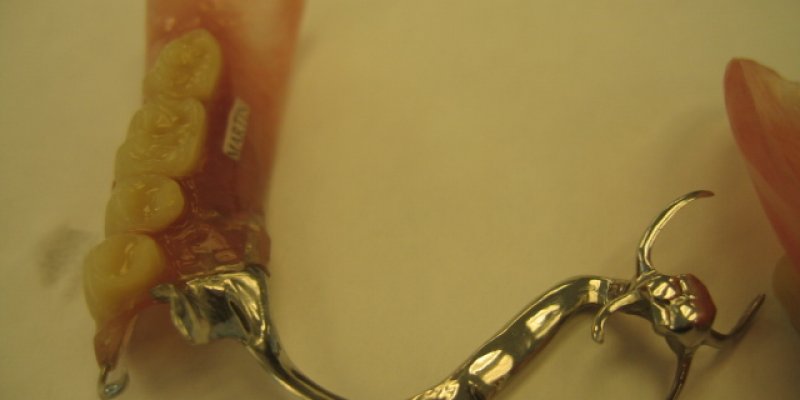
Partial dentures are removable appliances that can replace one or several missing teeth. They are usually made of plastic and metal and are designed to blend in with your natural teeth, improving the aesthetics of your smile and the functionality of your bite.
One of the main advantages of partial dentures is their cost. They are generally cheaper than both bridges and implants, making them a more accessible option for many patients. They are also non-invasive, requiring no surgery or alteration of surrounding teeth.
However, partial dentures do have their drawbacks. They usually aren't as comfortable or stable as bridges or implants, which can interfere with eating or speaking. They also require daily removal and cleaning, and over time, they may need adjustments as your mouth changes.
Space Maintainers
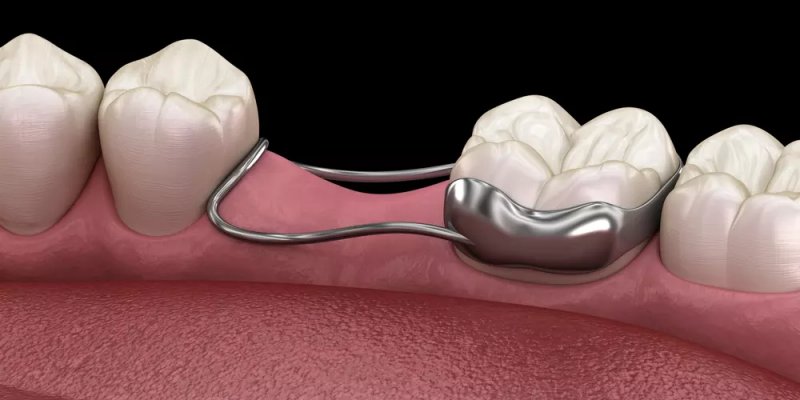
If you have lost a tooth and can't afford to replace it right away, space maintainers may be an option. Space maintainers are dental devices that hold the space left by a missing tooth to prevent the teeth on either side from shifting into the gap. They're usually built from pieces of metal and can be either removable or fixed.
Space maintainers are particularly useful in children who have lost primary teeth prematurely, to preserve the space for the permanent tooth to erupt. However, they can also be used in adults as a temporary solution until a more permanent tooth replacement can be afforded.
While space maintainers can prevent dental shifting and alignment issues, they do not replace the missing tooth's function or aesthetics. Therefore, they are typically considered a temporary solution until a more permanent tooth replacement, such as a bridge, implant, or partial denture, can be placed.
In conclusion, while dental bridges and implants are popular and effective tooth replacement options, they are not suitable for everyone. Partial dentures and space maintainers offer alternative solutions that may be more appropriate depending on the individual's specific circumstances, oral health, and budget. As always, it's important to discuss these options with your dentist to determine the best course of action for your oral health.
Understanding Insurance Coverage for Dental Procedures
Navigating the world of dental insurance can be complex, especially when it comes to high-end, costly treatments like dental implants and bridges. Understanding what your insurance covers is crucial in making an informed decision about your dental care.
Coverage for Dental Bridges
Dental bridges are often more likely to be covered by dental insurance providers. This is because they are considered a basic restorative procedure, similar to fillings and crowns. While the level of coverage can vary greatly depending on your specific insurance plan, it's common for insurance to cover a significant portion of the cost of a dental bridge. However, you may still be responsible for a co-pay or a percentage of the cost.
Coverage for Dental Implants
On the other hand, dental implants are often classified as a cosmetic or elective procedure by many insurance companies. This is due to the fact that they are a more sophisticated and costly solution for tooth replacement. As a result, many insurance plans do not cover dental implants, or they may only cover a small portion of the cost.
However, it's worth noting that the landscape of dental insurance is slowly changing, and some insurance companies are starting to recognize the health benefits of dental implants. Therefore, some plans may offer partial coverage for implants.
Discussing with Your Insurance Provider
Given the significant cost difference between dental bridges and implants, it's advisable to discuss with your insurance provider before deciding on the right option. Understanding your coverage can help you budget for your treatment and avoid unexpected costs.
Ask your insurance provider about the specifics of your plan, including what procedures are covered, what percentage of the cost is covered, and whether there are any waiting periods or annual maximums that could affect your coverage.
In conclusion, while dental insurance can help offset the cost of tooth replacement, coverage varies widely depending on the procedure and your specific insurance plan. Always check with your insurance provider and your dentist to understand your coverage and out-of-pocket costs before proceeding with treatment.
FAQ About Dental Bridges vs. Implants

What is a Dental Implant?
A dental implant is a tooth replacement option where a metal post, usually made of titanium, is implanted into the bone structure where a tooth has been removed. Over time, new bone grows around the implanted metal, providing a secure base for a crown to be attached.
What are the Pros and Cons of Dental Implants?
Dental implants are beneficial as they place less burden on surrounding teeth and promote healing of bone structures and gums. They can also reduce long-term risks to the jaw and are expected to last a lifetime. However, they can be costly, especially when multiple teeth need to be replaced. The process also takes longer and may require multiple procedures and oral surgery.
What is a Dental Bridge?
A dental bridge is a method of replacing missing teeth by attaching a prosthetic to the remaining healthy teeth surrounding a gap. The teeth on opposite sides of the gap are usually shaved down to accommodate the bridge, which is then capped over each tooth, replacing the missing ones.
What are the Pros and Cons of Dental Bridges?
Dental bridges are considered cost-effective and do not require bone grafting if bone loss is present. The process of getting a bridge is also quicker than getting an implant. However, bridges can place greater strain on surrounding structures and are not expected to last a lifetime. They also do not address underlying structural problems, such as bone loss due to the removal of teeth.
Can I use a mix of Dental Bridges and Implants?
Yes, in cases where patients have lost a significant number of teeth in a row, dentists may recommend a mixed approach. For example, an implant may be placed at one end, and a cap attached at the other end, creating a bridge from the implant post to the healthy tooth.
Will Dental Implants or Bridges be Covered by Insurance?
Many insurance companies view both dental implants and bridges as high-end, costly treatments. However, due to the cost difference, most insurance carriers are more likely to pay for a bridge procedure than an implant. It's recommended to speak with your insurance provider before deciding on a treatment option.
How do I choose between Dental Bridges and Implants?
The best way to choose the right treatment for your missing tooth is to consult with your dentist. They can weigh all the specific considerations of your situation to make the right recommendation for you. Factors such as cost, your oral health, and the condition of surrounding teeth will play a significant role in this decision.
Conclusion
In conclusion, dental implants and bridges are two effective options for replacing a missing tooth. According to experts who write for us on dental health, while dental bridges are more likely to be covered by insurance and require a smaller upfront cost, dental implants may be the better option for those in good overall health due to their longevity and minimal impact on surrounding teeth. Consulting with a dentist can help you make an informed decision based on your individual situation.
More to Read:
Previous Posts:





